Yesterday, the International Energy Agency (IEA) released its Energy Efficiency 2024 report, concluding that much faster progress on global energy efficiency is needed to meet the climate pledges of COP28 held last year. Nearly 200 countries, including the United States, pledged to double the global annual average rate of energy efficiency during the event. One year later, a weak improvement of just 1 percent has been achieved. However, the report includes critical takeaways for the building industry and buildings.

Key Findings on Energy Efficiency
Skilled Workers Are Scarce: Globally, the number of people working in energy efficiency-related jobs has reached nearly 10 million employees. However, shortages of qualified workers persist across occupations, including construction workers (which includes insulation installers), HVAC technicians, and electricians. Also, women make up only 20% of this workforce.
Energy Efficiency writ large must cast a wider net to find employees, including women, who have not traditionally been a key segment of the workforce.
Governments Increasingly Look to Energy Efficiency to Lower Bills: This year has seen a sharp rise in energy bills, including large spikes in gas, oil, and electricity prices, which forced customers to dig deeper into their wallets to cover the costs. Governments are stepping up policy action to improve energy efficiency, which the IEA cited as “the best single approach to simultaneously achieve sustained energy intensity gains, reduce costs for consumers, and enhance access to energy services.
This year, the report says, governments representing 30 percent of global energy use (including the U.S., Brazil, Canada, Mexico, and the U.K.) have policies specifically targeting affordability for low-income families through enhanced energy efficiency. (See https://insulationincentives.org/).
Policies and Technologies Already Exist to Double Progress by 2030: IEA’s report notes that policies to double global efficiency progress already exist. Moreover, it specifically calls out buildings as a critical method. The report notes:
“In countries with building energy codes in place, strengthening the energy efficiency requirements or expanding the scope from new to existing buildings can deliver quick efficiency grains.”
“Retrofitting existing buildings provides a means to generate early efficiency gains, local jobs, and greater comfort and affordability.”
The Takeaways
IEA’s progress report on energy efficiency helps assess progress toward essential climate goals. This year’s report highlights that efficiency electrification has been a bright spot in an otherwise lackluster year of progress on efficiency, with electrification expected to rise just under 2 percent for the year, compared with a long-term average of about 1 percent from 2010-2019. However, it notes that global energy intensity progress (the amount of energy used to produce a specific output or activity) needs to accelerate to achieve a sustained rate consistent with net zero pathways.
To read the full Energy Efficiency 2024 report, click here.
